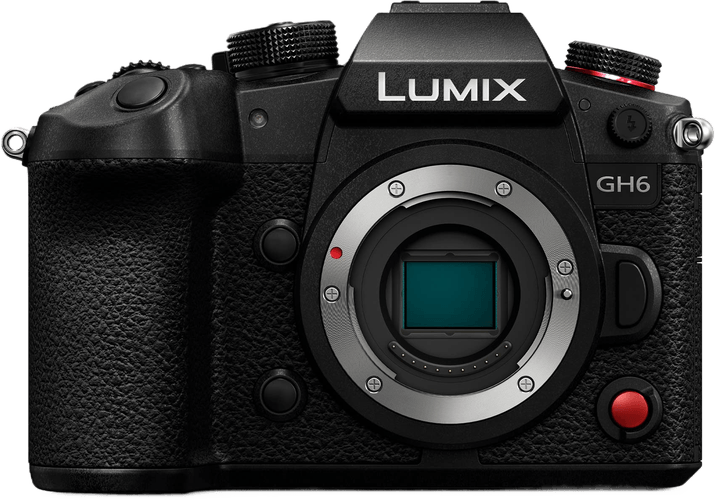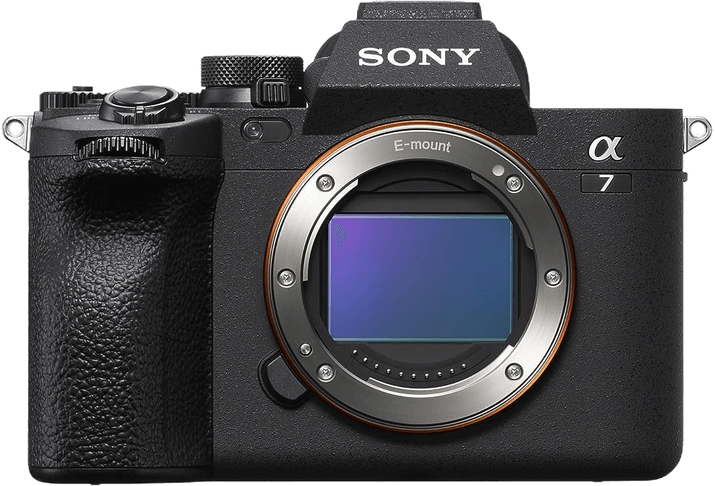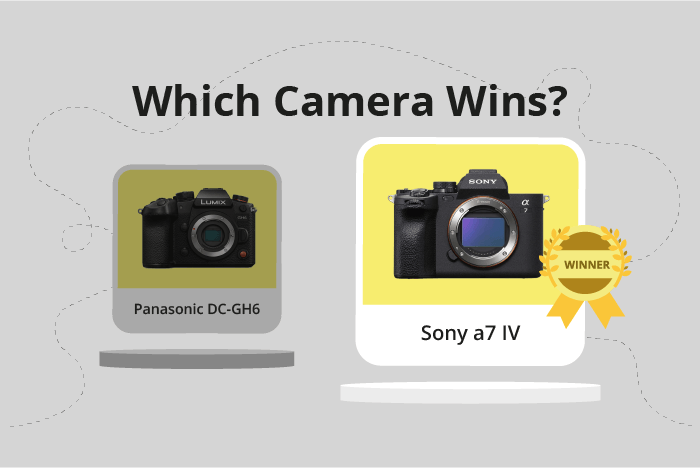Panasonic Lumix DC-GH6 vs Sony a7 IV Comparison
Panasonic Lumix DC-GH6

Sony a7 IV

The Sony a7 IV outperforms the Panasonic Lumix DC-GH6 with a score of 84/100 compared to the GH6’s 73/100. Both cameras are mirrorless and were released within months of each other, the GH6 in 2022 and the a7 IV in 2021. They share similar launch prices, with the GH6 at $2199 and the a7 IV at $2499.
The Sony a7 IV has the edge in terms of size and weight, measuring 131 x 96 x 80mm and weighing 659g, making it more compact and lighter than the GH6, which measures 138 x 100 x 100mm and weighs 823g. This difference in size and weight makes the a7 IV more portable and easier to handle during extended shooting sessions.
However, the Panasonic GH6 has its merits, especially for those who prioritize a more substantial camera body. Some photographers may find the larger size and weight of the GH6 to be an advantage, providing a more comfortable grip and better balance with larger lenses.
When considering these specifications, the Sony a7 IV takes the lead in terms of portability and ease of use, while the Panasonic GH6 offers a more substantial build for those who prefer a heftier camera. Both cameras have their unique strengths, making the choice between them dependent on individual preferences and priorities.
Panasonic Lumix DC-GH6 vs Sony a7 IV Overview and Optics
The Sony a7 IV outperforms the Panasonic Lumix DC-GH6 in optics with a score of 85/100 compared to the GH6’s 69/100. Both cameras share some key specifications, such as CMOS sensors, image stabilisation, and similar processors – the Venus Engine for the GH6 and the Bionz XR for the a7 IV.
The Sony a7 IV boasts a higher megapixel count at 33, compared to the GH6’s 25 megapixels. This results in more detailed images and better cropping potential. Additionally, the a7 IV has a superior sensor size with its Full Frame, as opposed to the GH6’s Micro Four Thirds sensor. The larger sensor size of the a7 IV contributes to better low-light performance and a shallower depth of field. Moreover, the Sony a7 IV has a higher DXOMARK score for the sensor at 97, while the GH6 scores 71, indicating better overall image quality.
On the other hand, the Panasonic GH6 has a faster shooting speed of 14 frames per second, compared to the a7 IV’s 10 frames per second. This could be advantageous for capturing fast-moving subjects or action scenes. The GH6 also uses the Micro 4/3 lens mount, which offers a wide range of lenses for various shooting scenarios.
Taking these factors into account, the Sony a7 IV is the stronger contender in optics due to its higher megapixel count, superior sensor size, and better DXOMARK score. However, the Panasonic GH6 may be more suitable for those who prioritize shooting speed and require a versatile lens mount system.
Panasonic Lumix DC-GH6 vs Sony a7 IV Video Performance
The Panasonic Lumix DC-GH6 outperforms the Sony a7 IV in video capabilities, scoring 96/100 compared to Sony’s 91/100. Both cameras share essential specs, such as a maximum video frame rate of 120fps and built-in time-lapse functionality. However, the GH6 has clear advantages that contribute to its higher score.
The most significant difference between the two cameras is the maximum video resolution. The GH6 offers a stunning 6K resolution, with maximum dimensions of 5760 x 2880. In contrast, the a7 IV only provides 4K resolution, with maximum dimensions of 3840 x 2160. This disparity means that the GH6 delivers substantially more detailed and sharper video footage, making it the superior choice for videographers seeking the highest quality output.
Despite its lower score, the Sony a7 IV still has its merits. The camera maintains a high video frame rate of 120fps, which is on par with the GH6. This feature enables both cameras to capture smooth slow-motion footage, making them suitable for action and sports videography. Additionally, the a7 IV’s 4K resolution is still considered high-quality and sufficient for most professional applications.
In comparing the Panasonic Lumix DC-GH6 and the Sony a7 IV, it is evident that the GH6 holds a distinct advantage in video capabilities due to its impressive 6K resolution. While the Sony a7 IV remains a strong contender with its 4K resolution and shared features, the GH6 is the clear winner for those seeking the highest video quality possible.
Panasonic Lumix DC-GH6 vs Sony a7 IV Features and Benefits
The Panasonic Lumix DC-GH6 and the Sony a7 IV both have a feature score of 83/100, making them equal in this aspect. They share several specifications, including a 3-inch screen size, touchscreen capability, flip screen, absence of GPS, and the presence of WIFI and Bluetooth connectivity.
The Lumix DC-GH6 has an advantage over the Sony a7 IV in screen resolution, offering 1,240,000 dots compared to the a7 IV’s 1,040,000 dots. This higher resolution provides a clearer and sharper display, which is beneficial for reviewing images and navigating menus on the camera.
On the other hand, the Sony a7 IV does not have any advantages in the features category compared to the Panasonic Lumix DC-GH6, as they share the same score and most of the specifications. The only difference is the lower screen resolution, which makes the Lumix DC-GH6 a better choice in terms of display quality.
Both cameras perform well in terms of features, with the Panasonic Lumix DC-GH6 having a slight edge in screen resolution. This difference, however, may not be significant enough to influence a purchasing decision, as both cameras offer a range of useful features for photographers and videographers alike. Ultimately, the choice between these two cameras will depend on individual preferences and the importance placed on screen resolution.
Panasonic Lumix DC-GH6 vs Sony a7 IV Storage and Battery
The Sony a7 IV outperforms the Panasonic Lumix DC-GH6 in storage and battery with a score of 76/100, compared to the GH6’s 68/100. Both cameras have two memory card slots, with the GH6 accepting SD (UHS-II compatible) and CFexpress B cards, while the a7 IV accepts CFexpress Type A and SD (UHS-II compatible) cards.
The a7 IV’s superior battery life of 580 shots sets it apart from the GH6, which offers 360 shots. Both cameras use Li-ion battery packs, and the a7 IV uses the NP-FZ100. Additionally, both cameras support USB charging.
Although the GH6 has a lower score, it still offers reliable storage options and battery life for most users. However, the a7 IV’s longer battery life and versatile storage options make it the better choice for those who prioritize these features.
Alternatives to the Panasonic Lumix DC-GH6 and Sony a7 IV
Are you still undecided about which camera is right for you? Have a look at these popular comparisons that feature the Panasonic Lumix DC-GH6 or the Sony a7 IV:

